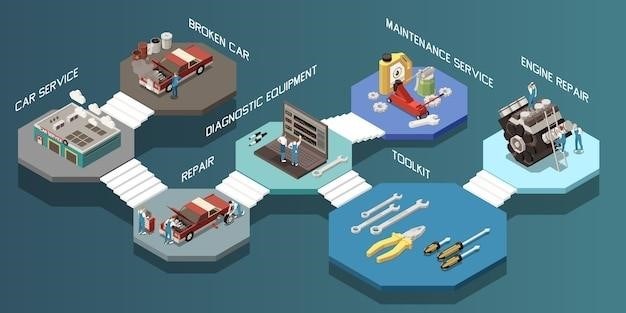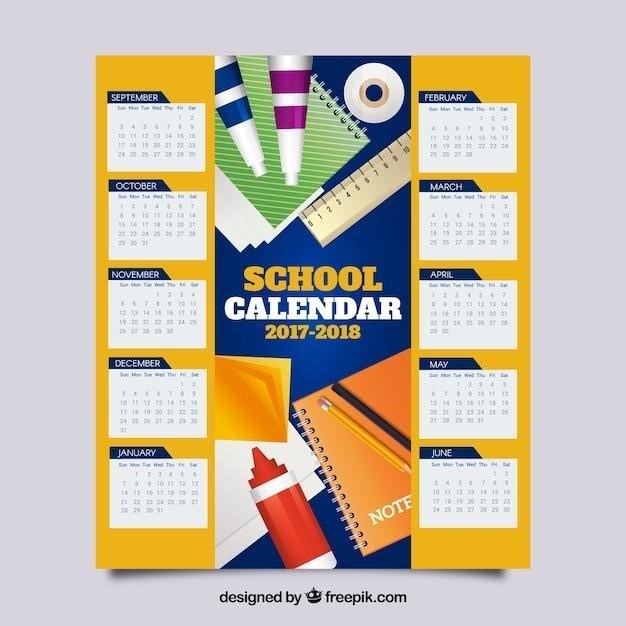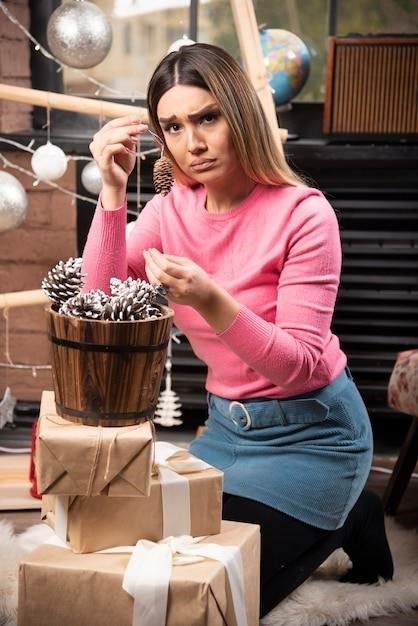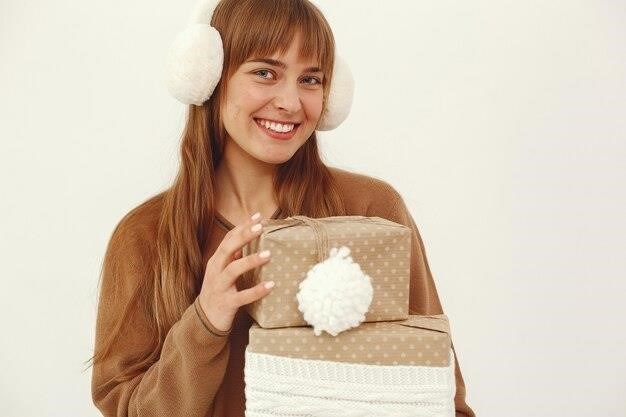Sharpening Guide⁚ A Comprehensive Overview
This guide provides a comprehensive overview of knife sharpening techniques, encompassing various methods, tools, and essential care practices․ Mastering these skills ensures your knives remain sharp, efficient, and safe for use․
Choosing the Right Sharpening Angle
Selecting the appropriate sharpening angle is crucial for achieving a sharp and durable edge․ The ideal angle varies depending on the knife type and its intended use․ Generally, a 20-degree angle is considered standard for many kitchen knives, offering a balance between sharpness and edge longevity․ However, some knives, particularly those with thinner blades from Eastern manufacturers, may benefit from a slightly lower angle․ Conversely, thicker blades might require a steeper angle․ Using a sharpening guide, whether a purpose-built tool or a makeshift method like folded paper, can help maintain consistency throughout the sharpening process․ Experimentation and practice are key to determining the optimal angle for each of your knives, ensuring both effectiveness and edge retention․
Types of Sharpening Guides Available
A variety of sharpening guides are available to assist in maintaining a consistent sharpening angle․ Simple, inexpensive guides often consist of a small, angled block that clamps onto the knife’s spine, ensuring the blade rests at the correct angle against the sharpening stone․ More sophisticated guides might incorporate adjustable angles or different sized guides to accommodate various knife blade thicknesses․ Some guides are designed specifically for use with particular sharpening stones or systems․ Additionally, DIY solutions exist, such as using folded pieces of paper to create a makeshift angle guide․ The choice of sharpening guide depends on individual preferences, budget, and the frequency of knife sharpening․ Regardless of type, a reliable guide significantly improves the sharpening process, leading to a more consistently sharp and even edge․
Using Sharpening Guides⁚ A Step-by-Step Process
Begin by selecting the appropriate sharpening guide for your knife’s blade size and desired sharpening angle․ Securely attach the guide to the knife’s spine, ensuring a firm and stable fit․ Next, prepare your sharpening stone according to the manufacturer’s instructions; this usually involves soaking the stone in water for a specified duration․ Apply a lubricating agent, such as water or honing oil, to the stone’s surface․ Position the knife against the stone, maintaining consistent contact with the guide to preserve the correct angle․ Using gentle, even strokes, draw the knife across the stone’s surface, repeating the process on both sides of the blade․ Regularly check the guide’s position to ensure the angle remains consistent throughout the sharpening process․ Remember, patience and even pressure are key to achieving a sharp and well-maintained knife edge․ After sharpening, clean both the knife and sharpening stone thoroughly․
Maintaining the Correct Angle During Sharpening
Maintaining a consistent angle is crucial for effective sharpening․ The ideal angle varies depending on the knife type and its intended use; a common angle is 20 degrees․ Using a sharpening guide can significantly aid in maintaining this angle throughout the process․ Without a guide, visualize the angle and try to maintain it consistently as you move the blade across the stone․ Focus on keeping the blade flat against the stone’s surface․ Avoid applying excessive pressure, which can cause the blade to shift and result in an uneven edge․ Regularly check the angle by visually inspecting the blade’s position relative to the stone; Practice makes perfect; consistent repetition will improve your ability to maintain the correct angle․ If you find it challenging, consider using a low-angle sharpening guide, and gradually increase your angle as your skill improves․ Remember, a consistently maintained angle is key to a well-sharpened blade․
Sharpening Different Knife Types
Different knife types may require variations in sharpening techniques and angles․ For example, thinner, more delicate knives, such as Japanese knives, often benefit from a lower sharpening angle (around 15 degrees) for a sharper, more refined edge, though this also makes them more fragile․ Thicker, more robust knives, like hunting knives, may tolerate a higher angle (20-25 degrees) for increased durability․ The blade’s geometry also plays a role; a double-bevel blade will require sharpening both sides, while a single-bevel blade only needs one side sharpened․ Always consult the manufacturer’s recommendations or a knowledgeable knife expert for specific guidance on your knife type․ Adjust your sharpening technique accordingly, paying close attention to the blade’s profile and material․ Remember that overly aggressive sharpening can damage delicate blades, while insufficient sharpening will not restore a sharp edge effectively․ Practice and patience are key to mastering the art of sharpening various knife types․

Sharpening Stone Selection and Preparation
Choosing the right sharpening stone, considering grit and type, is crucial for effective knife sharpening․ Proper preparation, including soaking, ensures optimal performance and extends the stone’s lifespan․
Coarse vs․ Fine Grit Stones
Sharpening stones come in various grits, with coarse grit stones (lower numbers like 100-300) being ideal for initial sharpening or significant damage repair․ These stones aggressively remove material, quickly restoring a sharp edge to severely dull blades․ However, coarse stones alone leave a rough edge․ Fine grit stones (higher numbers like 1000-8000), on the other hand, are used for honing and refining the edge․ They create a smoother, more polished finish, enhancing sharpness and durability; The choice depends on the knife’s condition⁚ use coarse for significant repairs, then transition to fine for polishing and achieving ultimate sharpness․ Many sharpening sets include both coarse and fine stones for comprehensive sharpening․
Preparing the Sharpening Stone (Soaking, etc․)
Proper preparation of your sharpening stone is crucial for optimal performance and longevity․ Many whetstones, especially natural stones, require soaking in water before use․ This process saturates the stone, preventing it from clogging with metal particles during sharpening and ensuring a smooth, consistent sharpening surface․ Soaking times vary depending on the stone type and size; check the manufacturer’s instructions for precise guidelines․ Typically, 10-30 minutes of soaking is sufficient for most stones․ After soaking, gently wipe the stone clean before beginning the sharpening process․ For oil stones, lubrication with honing oil is necessary instead of water, and regular cleaning with a soft brush removes any accumulated debris․ Proper preparation maintains the stone’s integrity, extending its useful life and guaranteeing superior sharpening results․

Knife Sharpening Techniques
This section details various knife sharpening methods, from using whetstones and honing steels to exploring alternative sharpening approaches․
Sharpening with a Whetstone
Whetstone sharpening, a traditional method, involves using a rectangular block to hone your knife’s edge․ Before starting, soak the whetstone in water to saturate it completely; this is crucial for effective sharpening․ The process typically uses a two-sided stone⁚ a coarse side for initially sharpening dull blades and a fine side for refining the edge․ Holding the knife at a consistent 20-degree angle is vital; using a sharpening guide can assist beginners in maintaining this angle․ Gently draw the blade across the stone, maintaining even pressure and repeating the process on both sides of the blade․ For extremely dull knives, start with the coarse side, and then finish with the fine side for a polished, razor-sharp edge․ Remember to frequently re-wet the stone to prevent it from drying out․
Using a Sharpening Steel (Honing)
Honing, distinct from sharpening, straightens the blade’s edge, improving its smoothness and efficiency․ Unlike sharpening, which removes material, honing realigns microscopic imperfections along the cutting edge․ To hone, hold the steel vertically, resting its tip on a stable surface․ Position the knife’s blade against the steel at a 15-20 degree angle․ Using a smooth, controlled motion, draw the blade down and across the steel’s surface, from heel to tip․ Repeat this process on both sides of the blade․ Proper honing technique involves maintaining a consistent angle and pressure throughout the stroke․ Regular honing, ideally weekly or even after each use, significantly enhances the knife’s cutting performance and extends its sharpness between sharpening sessions․ It prevents the need for frequent sharpening, preserving your knife’s edge․
Alternative Sharpening Methods
Beyond whetstones and honing steels, several alternative sharpening methods exist․ Electric sharpeners offer convenience, particularly for less experienced users, but may not provide the precision of manual methods․ Pull-through sharpeners, while simple to use, can sometimes damage the blade if not used correctly․ Sandpaper, when used carefully with a flat surface and appropriate backing, can effectively sharpen knives, especially when different grits are employed for coarse and fine sharpening․ For extremely dull knives, a coarser grit is initially used, followed by finer grits for refinement․ Regardless of the chosen method, maintaining a consistent angle is crucial for achieving a sharp, even edge․ Each alternative method presents a trade-off between ease of use, precision, and potential impact on the knife’s integrity․
Knife Care and Maintenance
Proper knife care ensures longevity and peak performance․ This involves appropriate storage, regular honing, and timely sharpening to maintain a consistently sharp edge․
Proper Knife Storage
Storing knives correctly is crucial for preserving their sharpness and preventing damage․ Avoid haphazard storage in drawers, where blades can collide and dull․ Magnetic strips affixed to walls or backsplashes offer convenient, space-saving storage that keeps blades protected and readily accessible․ Knife blocks provide a more traditional method, but ensure the slots are appropriately sized to prevent undue pressure on the blades․ For high-end knives or those with delicate edges, individual sheaths offer optimal protection against chipping and dulling․ Remember that proper storage significantly extends the life and effectiveness of your knives between sharpening sessions․ Regardless of the method chosen, always ensure knives are dry before storing to prevent rust and corrosion․ Proper storage, combined with a regular honing schedule, ensures your knives stay sharper for longer, minimizing the frequency of sharpening and reducing wear and tear on the blades․
Frequency of Sharpening and Honing
The frequency of sharpening and honing depends on usage and the type of knife․ Honing, the process of straightening the blade’s edge, should be done regularly, even weekly, before each use for some․ This maintains the sharpness between sharpening sessions․ Sharpening, which removes material to restore the edge, is less frequent․ For home cooks using their knives daily, a sharpening once or twice a year might suffice․ Professional chefs or those who use their knives extensively may need to sharpen more often, perhaps every few months․ The signs of a dull knife include difficulty cutting cleanly, increased effort required for cutting, and a noticeable lack of sharpness․ If you notice the blade feels less sharp, or cutting becomes more difficult than usual, it’s time for honing․ If honing no longer improves cutting performance, it’s time for a full sharpening to restore the blade’s edge․























